Black Sea Shipyard: the present
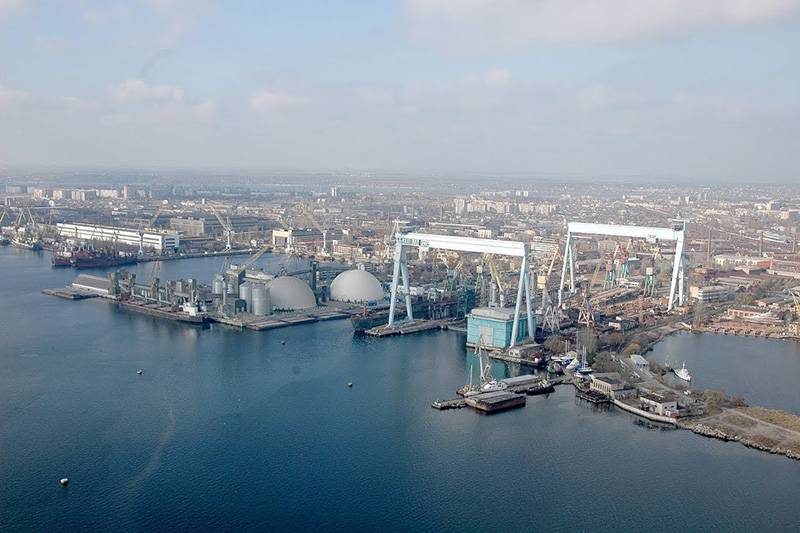
What we have - do not store ...
Through the efforts of the entire Soviet people to the end of 1930's. the enterprise was one of the largest shipbuilding centers of the USSR, carrying out the construction of various classes of ships: from patrol boats and submarines to icebreakers and light cruisers. Construction began of the ship of the 23 project - “Soviet Ukraine” - the largest order ever made by the plant. For the construction of "Soviet Ukraine" and other ships of the newest projects, the company was modernized and expanded. A new building berth for large orders was erected, special workshops were built, including for the assembly of tower installations of the main caliber. A large number of new equipment arrived, new technologies and production mastered.
22 June 1941, the Great Patriotic War began, changed the course and rhythm of the life of the whole country - the Black Sea Shipyard also made a significant contribution to its defense. Those ships that were in high readiness were quickly completed. Mastered the release of various weapons. However, the unfavorable development of hostilities put Nikolaev at risk of capture by the enemy. Began evacuation. The equipment was taken out, the unfinished ships were taken in tow to Sevastopol and further to the ports of the Caucasian coast.
In August 1941, Nikolaev was occupied by the Nazi troops. And again for the plant began a difficult period of his life - even more difficult than during the years of the Civil War. The invaders planned to integrate the enterprise into their industrial structure, focusing it on small and medium ship repair, and in the long run, it is possible to launch small-tonnage shipbuilding production. However, the plans of the enemy were far from implementation. The use of the intact capacities of the Black Sea Plant (during the occupation years known as the “Southern Shipyard”) turned out to be very difficult for many reasons, and not the last of them was the activity of the Soviet underground in Nikolaev.
By their efforts, the floating dock was put out of action, and other sabotage operations were carried out. The city was liberated by Soviet troops at the end of March 1944. Retreating, the German troops thoroughly worked in the destruction of the Nikolaev enterprises. Almost all of the Black Sea plant lay in ruins: of the 700 buildings, only two remained intact.
Enterprise Recovery It began the day after the return of Soviet power. Workers and employees of the plant began to clear the ruins. A lot of things had to be simply rebuilt - the factory equipment was mostly either destroyed or badly damaged. Part of it managed to evacuate in the summer of 1941, and now it all gradually returned to the place. Together, the shipbuilding giant was restored by the end of the 1940-s. and began to implement its direct destination - the construction of ships.
The renovated plant gradually gained momentum - in its large majority its workshops were re-erected. CSY builds warships and vessels for the national economy. Builds cruisers, submarines, kitobases, dry cargo ships and trawlers. With the start of the 1960's, the Black Sea Plant was the only one in the USSR that began building aircraft-carrying cruisers: first antisubmarine helicopter carriersand then heavy aircraft-carrying cruisers.
These were completely new ships for our shipbuilding industry, the construction experience of which domestic shipbuilders did not have. Therefore, much had to be done for the first time, often by touch, by trial and error. Gradually, experience was gained, the necessary knowledge and skills were accumulated and accumulated. In parallel with the shipbuilding process, the enterprise was reconstructed for new labor-intensive production tasks.
From the late 1960s to the early 1970s The Black Sea plant began the next large-scale reconstruction, which was supposed to ensure the construction of aircraft carriers. It continued in parallel with the construction of orders for the naval fleet and for the needs of the national economy of the USSR. In the late 1970s and early 1980s, the plant purchased and installed powerful Finnish-made gantry cranes with a lifting capacity of 900 tons each. This and other measures made it possible to equip the slipway complex, which in terms of mechanization and size was the largest in Europe and one of the largest in the world. The presence of gantry cranes allowed the assembly of the ship’s hulls on the slipway in large blocks weighing over 11 thousand tons.
The plant stood on the threshold of a new stage in the development of domestic aircraft carriers - 1143.5 and 1143.6 heavy aircraft carrier cruisersequipped with springboard, aerofinishers and intended for basing airplanes with horizontal takeoff and landing. They were to be replaced by ships with an atomic power plant of the 1143.7 project.
For the future serial construction of atomic heavy aircraft-carrying cruisers, it was planned to build a whole range of new workshops, in which it was planned to manufacture and assemble ship-based nuclear power plants. The total area of this complex should have been more than 50 thousand square meters. meters - for their placement was namyt additional site.
By the end of 1980's Without exaggeration, the Black Sea Shipyard was at the peak of its industrial development, being one of the leading shipbuilding enterprises. However, such a long, intense and laborious ascent to the summit was interrupted by a quick, ruthless and crushing fall.
... And lose - cry
The country was shaken by a rising political fever. More and more I wanted to rally, and not to work. Changes were needed, just needed, and moreover, urgently. But what emerged from the grotesque picture called “perestroika” began to look more and more like an avalanche sweeping everything in its path. After all, when a well-built house burns to the ground and collapses - this is also a change ...
Centrifugal processes that are difficult to attribute to the category of constructive, began to affect all segments of the state. Industry, of course, was no exception. Already in 1990, the Black Sea Plant began to feel serious disruptions in the supply of necessary equipment and materials, but the production process did not stop. After August 1991, the obvious destruction of the USSR began, Ukraine declared its independence, Leonid Makarovich Kravchuk promised impressively that the construction of aircraft carriers would continue, and the people believed in these “obytsyanki-tsyatyanka”.
In the autumn of the same year, the command of the Navy stopped financing the ships that were in factory construction. In February, 1992, the construction was frozen for an indefinite period, which increasingly gave way to infinity. As a result of the skillful fraud of enterprising US citizens and lack of experience and competence in matters of new business conditions, the enthusiasm was cut to pieces. atomic heavy aircraft carrying cruiser "Ulyanovsk".
Deprived of military orders, which were the main production segment and the main source of financing, the Black Sea Plant was forced to adapt to the new conditions. Initially, it seemed that the difficult times would end soon, the military shipbuilding would get better again, and the factory would work again at full strength. True, no one imagined how all this can be adjusted. So far, having lost state orders to a greater degree, the management of the enterprise has set a course for cooperation with foreign customers.
Already at the beginning of 1992, a contract was successfully concluded for the construction of tankers with a deadweight of 45 thousand tons for a Norwegian customer. In March, the first tanker for Norwegians, designated the order 1992, was laid on the stockpile of the 1 number in March.
14 September 1992, when gas cutters quickly cut down the last sections left from the nuclear Ulyanovsk, a second tanker was laid on the stocks 0 - the order 202. However, for several reasons, this contract was canceled at the beginning of 1993. Nevertheless, the Black Sea Shipyard continued to be in the field of view of foreign customers. Its still significant and streamlined production facilities, product quality and relative cheapness compared with foreign enterprises were serious arguments in favor of business cooperation.
The Greek company Avin International, which was part of the economic empire of the notorious Vardinoiannis clan, became interested in the company's capabilities. The Vardinoyannis family is one of the richest and most influential in Greece. Well known in the international arena. The founder of the family business Vardis Vardinoyannis was born in 1933 on Crete in a family of farmers. Then he moved to Greece, went into business and quite successfully. He had five children, who also continued the family business, turning their business into a transnational corporation that deals with a variety of industries, from shipbuilding and oil transportation to media companies and publishing houses.
The company Avin International, controlled by Yannis Vardinoyannis, the son of the founder of the family business, began cooperation with the Black Sea factory. Avin International specializes in the transportation of oil and is one of the world's largest independent companies engaged in this lucrative business. The collapse of the Soviet Union, the collapse of the CMEA and other structures that were alternatives to the Western economy, provided tremendous opportunities for business circles in the West in the face of pristinely clean and free markets.
Business is not the poorest Greek family flourished, and oil transport as well. The management of Avin International, taking advantage of the convenient opportunity, decided to replenish its tanker fleet by building four product tankers with 45 deadweight, thou. Tons on the stocks of the Black Sea plant. The tanker project 17012 was developed by the Chernomorsudoproekt Nikolaev design bureau. The head tanker "Cretey Amber" was launched in an unusually solemn atmosphere 4 June 1994. The ceremony was attended by members of the family Vardinoyannisov, a large number of businessmen, including representatives of insurance companies.
After a successful descent, as usual, a banquet was organized. One of the American businessmen present, a customer’s creditor banker, inquired what kind of a very decent-looking establishment that the unofficial part of the ceremony was at. Obviously, it was built specifically for banquets? When an employee of the plant, who speaks English, answered him, that this is a working canteen, the American was very surprised and noticed that he had never seen anything like that in his country.
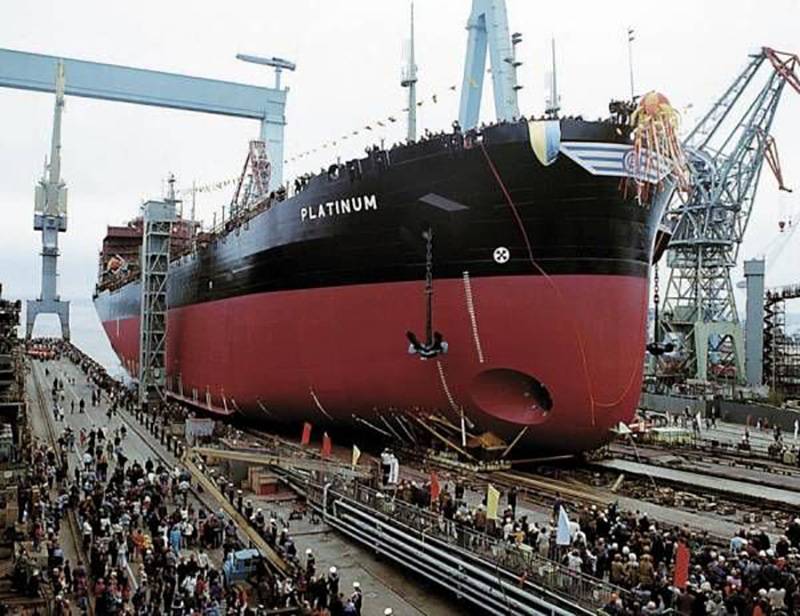
The rest of the tanker followed. In February, 1995 was lowered “Kriti Amethyst”, in May 1996, - “Kriti Platinum”. Behind them - "Pearl", "Theodoros" and "Nikos". The construction of the tanker series was completed in 2002. The company, which very recently built the most difficult heavy aircraft carrier cruisers, did not make much difficulty to build tankers. The proceeds from cooperation with Avin International allowed the Black Sea plant to extend all 1990s. and the start of the 2000's.
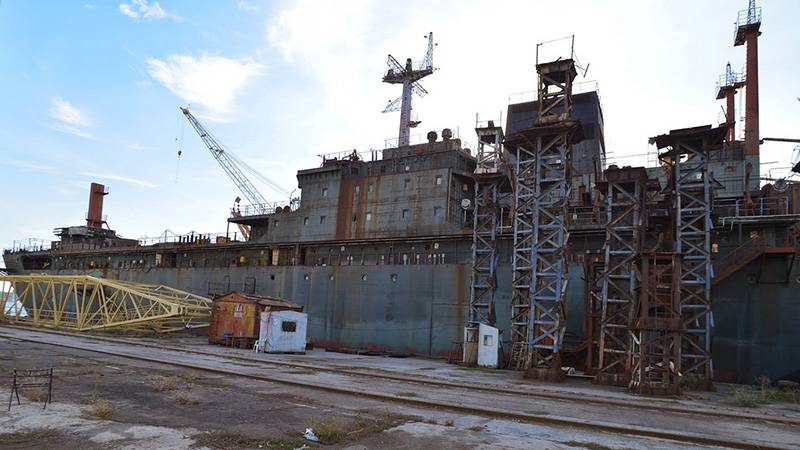
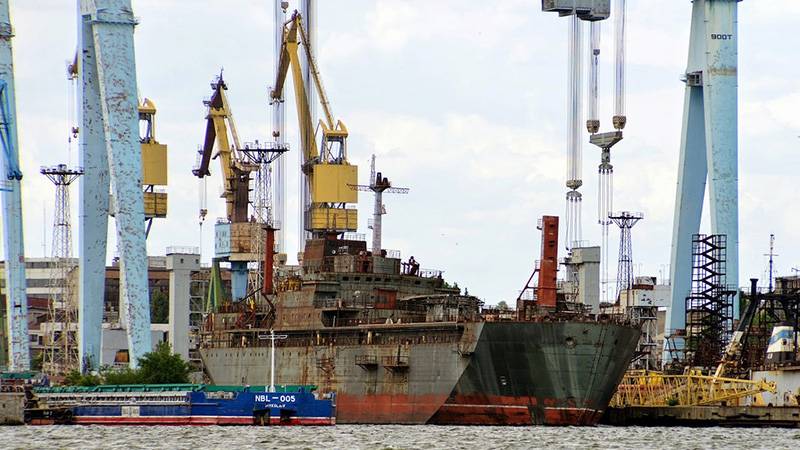
However, the Greek tankers and their customers left, and the company was again alone with its problems, growing like a snowball. The state was in no hurry to build ships for their own needs, citing a chronic shortage of money. New foreign customers were not. The unfinished Varyag left in tow in China. A rusting pile froze at the factory wall of the floating base of the 2020 project, which did not receive money for the completion of the project.
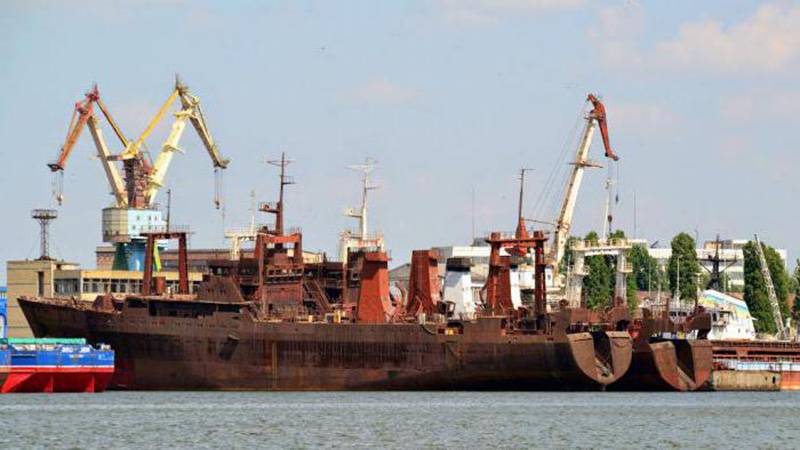
Difficult situation has developed in the business of the production of fishing trawlers. With the collapse of the Soviet Union, the solvency of the Minrybkhoz of Russia fell catastrophically, and the fisheries could not buy trawlers in their previous volumes for their own needs. Several almost completed fishing vessels were waiting for the transfer of money from the extension wall. Some trawlers of the Minrybkhoz of Russia managed to redeem with great difficulty, but their line production was stopped.
No prospects
After the proclamation of independence of Ukraine among its politicians and military went around the opinion that the current independent state is nothing more than a formidable maritime power. This assertion was supported by arguments from the Black Sea Fleet ship fleet located in the territory of the shipbuilding and ship repair factories in Nikolaev, Kherson, Feodosia and Kerch, and by the regular release of the illustrated magazine Sea Power in Sevastopol.
But it turned out that it was somewhat easier to declare yourself a maritime power than to maintain such a status. All the conversations and promises of Mr. Kravchuk about "building aircraft carriers" remained only conversations and promises. With the Soviet legacy at the Black Sea Plant with the new government could only complete the reconnaissance ship "Pridneprovye", which, in the absence of the necessary equipment, was converted into a headquarters and renamed "Slavutych".
Having fulfilled the contract for a Greek customer, the Black Sea Shipyard was left without work. Its huge production facilities, specialists possessing unique experience, high-tech equipment - all this turned out to be unclaimed in the new economic conditions. Gradually, the collective, once numerous, was reduced - workers and engineers began to quit en masse. Who went abroad to work in the specialty ... Who tried to start their own business ... Some completely changed the scope of activities.
In 2003, the Black Sea Shipyard was excluded from the list of strategic enterprises that could not be sold. Tenants, small and large, reached the territory of the shipbuilding giant. The largest slipway in Europe remained empty and gradually began to grow over with shrubs. The shrub was soon supplemented with trees. A cargo transshipment center was located at the plant, the company Nibulon, which transports grain, leased most of the territory. The Black Sea Shipyard was privatized and eventually became part of the Smart Holding group, owned by Vadim Novinsky.
In the second half of the 2000-s, rumors circulating in the city about the possible resumption of the construction of warships at the Black Sea plant seemed to start to take on some more tangible form. 20 November 2009 by a commission of the Ministry of Defense of Ukraine finally adopted a technical project of the multipurpose corvette being developed by 3 of the year, which received the 58250 index.
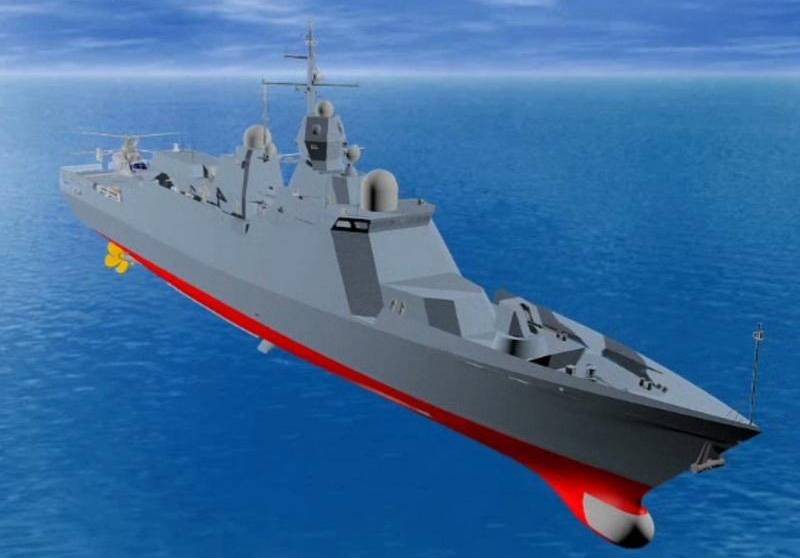
The project activity on the creation of such a ship for its own needs and possible export has been conducted in Ukraine since 2002. The original design of the 58200 “Haiduk-21” corvette, developed by the Leninskaya Kuznitsa factory in Kiev, was rejected, and with 2005, it took up the direction of the Research and Design Center in Nikolaev. According to the project, the corvette with a displacement of 2650 tons was to be equipped with gas turbine engines produced by the Zarya-Mashproekt plant and have several weapon options with a predominance of those produced in Europe.
The laying of the lead ship, named “Vladimir the Great”, took place on May 17 of the year 2011. The cost of the lead ship was estimated at about 250 million euros. Before 2026, it was planned to build 10 – 12 of such corvettes, some of which were intended for export.
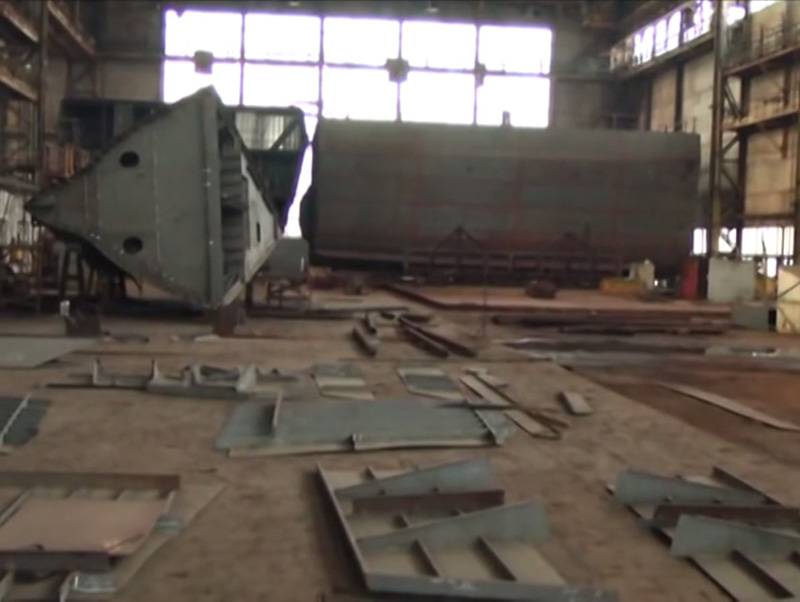
However, it turned out that even the construction of such a relatively small warship such as a corvette, the Ukrainian economy can not afford. Funding was intermittent. At the time of the final construction shutdown in July 2014, only a few hull sections were formed, the readiness of which is estimated to be no more than 40%. The fate of the corvettes construction program is still hanging in the air.
In the 2013 year, it seemed, Nikolayev’s shipbuilding enterprises had a chance to resume their activities. A Russian delegation headed by Dmitry Rogozin arrived in the city to sign an agreement on cooperation in the technical sector. According to Rogozin himself, they were met very warmly and cordially. Understanding was reached on many issues. It is likely that the Nikolaev shipyards would receive orders from the Russian side, however, the coup in the near future in Kiev and subsequent events put an end to these plans.
In recent years, the Black Sea Shipyard survived only at the expense of small and medium ship repair and the proceeds from the rental of space. In the summer of 2017, the plant was declared bankrupt. His future is uncertain, but already quite clear.
Finale
Black Sea Shipyard was created by 120 years ago for the implementation of extensive tasks not only commercial, but primarily of a military nature. For a long and sometimes dramatic century stories CSY tirelessly coped with its main task - the construction of ships. The activities of the plant is inextricably linked with the life of the state for the defense of which he worked. The state, which knew and troubled times, and periods of recovery and unprecedented power. Will the new ships leave the Black Sea stocks, or will the newly appeared aborigines feed the goats on the ruins of a civilization that could conquer the oceans? The point in the history of CSY is not set yet.
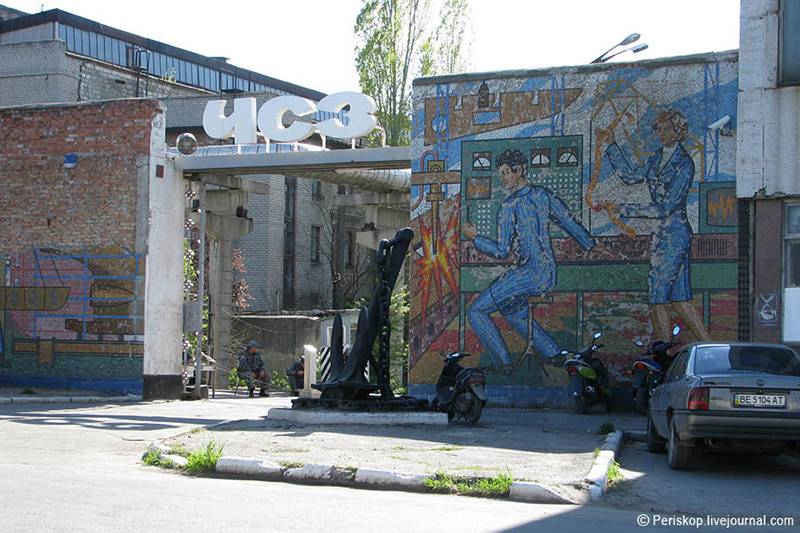
Information